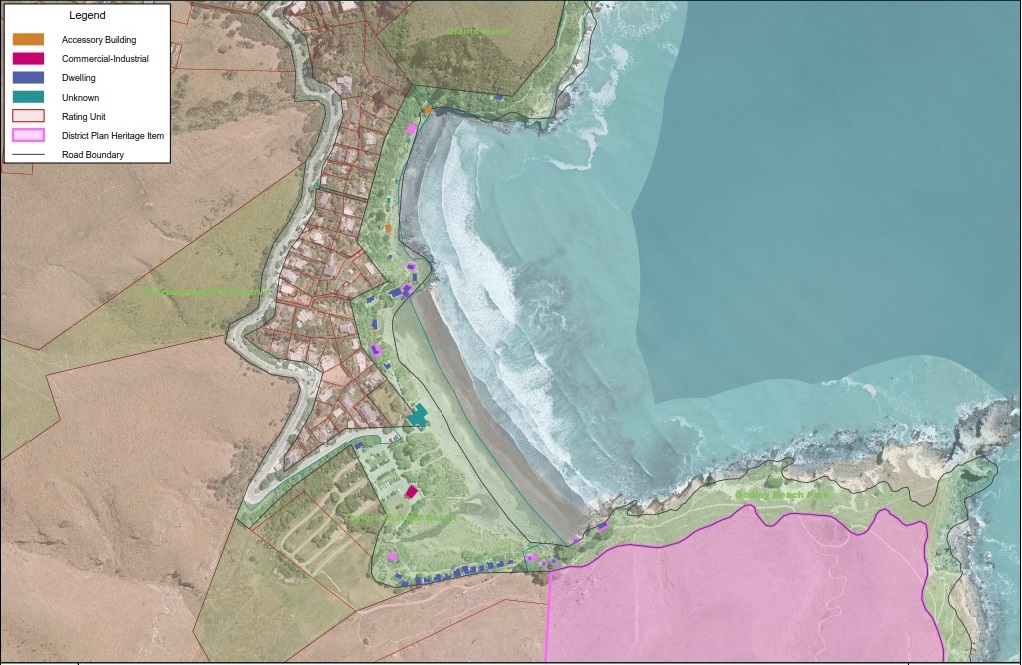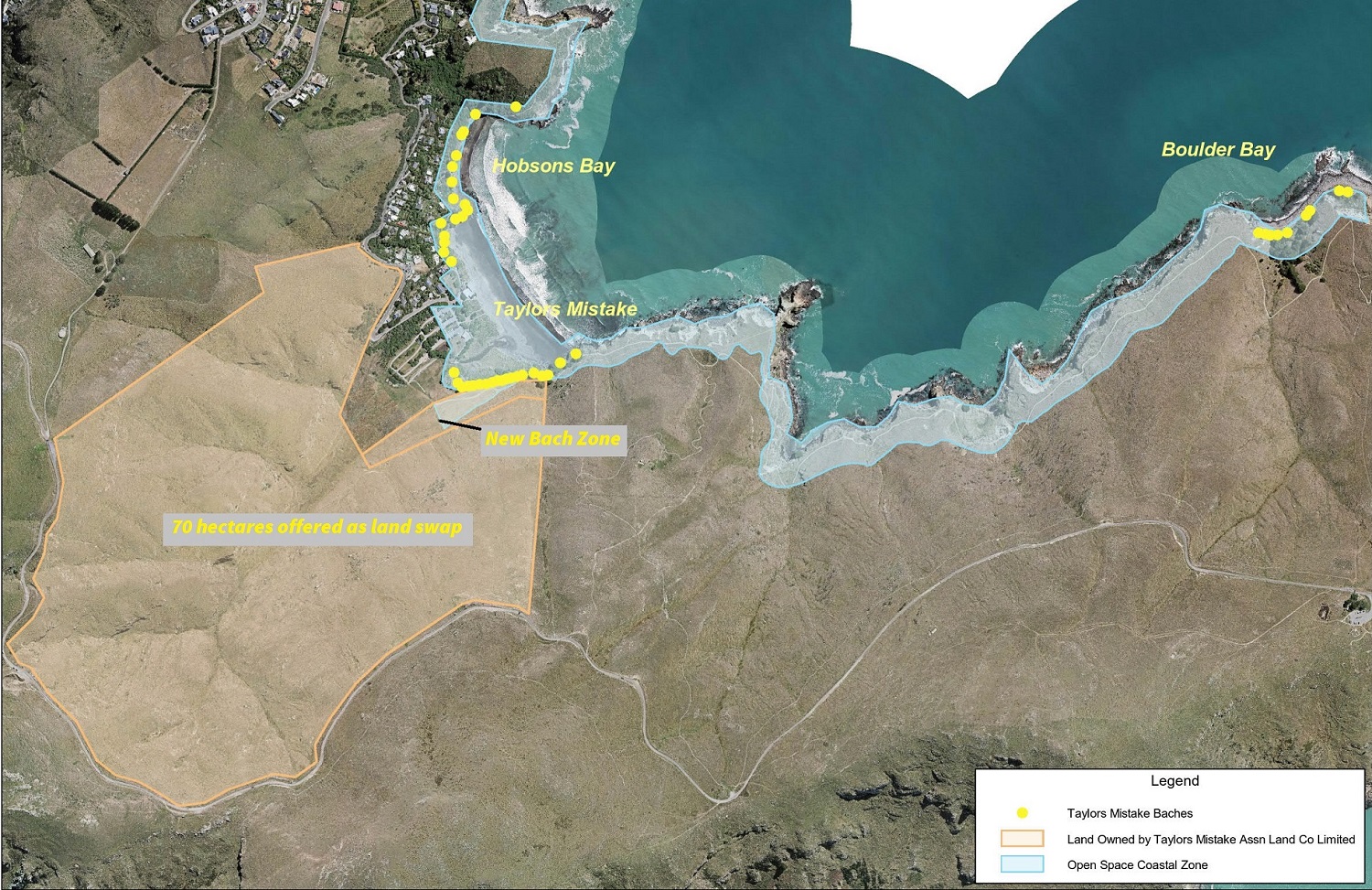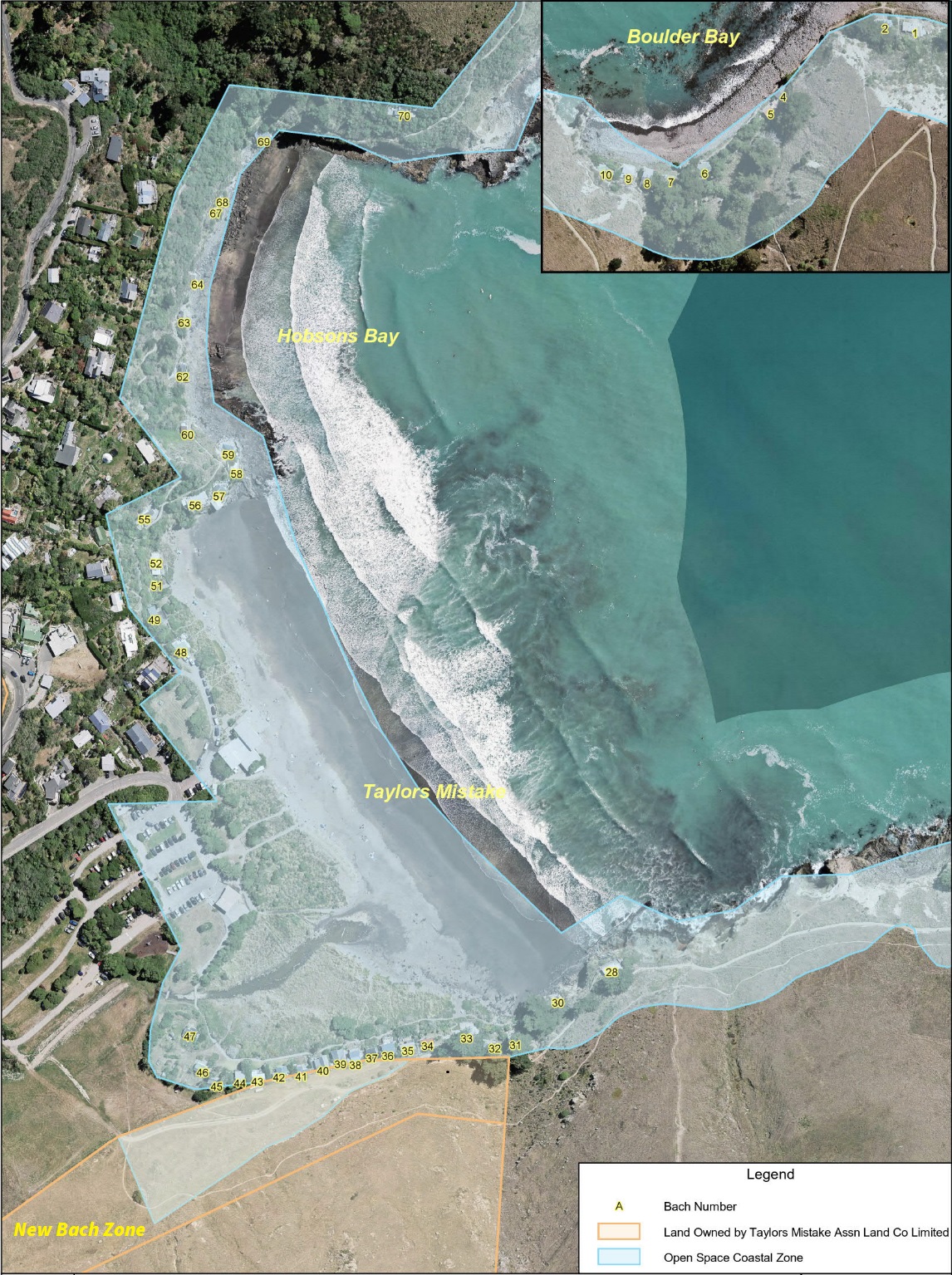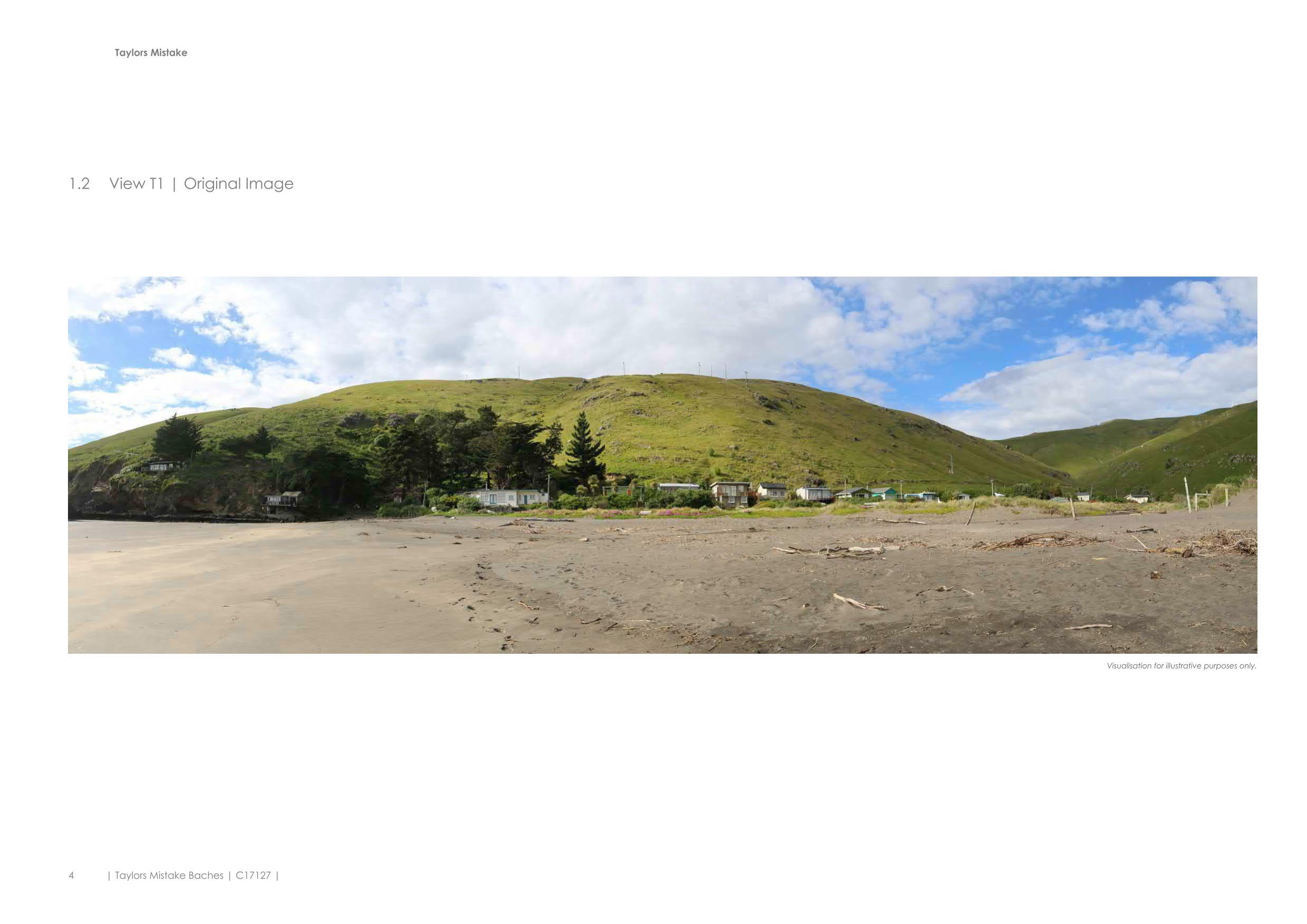Privately owned baches have been part of the landscape at Taylors Mistake, Hobsons Bay and Boulder Bay since the early 1900s. In total, there are 45 baches currently occupying public land - 27 at Taylors Mistake, 9 at Hobsons Bay and 9 at Boulder Bay.
Christchurch is not the only council grappling with the issue of privately owned baches occupying land set aside for public use. Many baches dot the New Zealand coastline, riverbanks and lake shores on land managed by territorial authorities and the Department of Conservation (DOC). To date there has been a range of responses to this issue, with mixed results.

First baches were established in caves around the coastline
How the baches came to be
The first European land owner at Taylors Mistake, Hobson Bay and Boulder Bay was the Canterbury Association. This land was subdivided in 1851, with a one-chain strip of land from the high tide mark reserved as road. The road reserve was later extended, with the Sumner Borough Council having full ownership rights.
The first baches appear to have been established in the early 1890s, built into caves along the foreshore. In 1911, the Sumner Borough Council resolved that cave (bach) dwellers must pay 20 shillings per year, on the understanding that the Council reserved the right for the public to access the land at all times.
The first hut in the Taylors Mistake area known as ‘The Row’, or ‘Rotten Row’, appeared in 1913 and by 1920 another dozen or so baches had been built there. Between 1920 and 1930 more baches were built and the older baches were renovated. By World War II there were 72 baches on the foreshore between Hobsons Bay and Boulder Bay. The Sumner Borough Council stopped issuing licences for new baches in the early 1940s.
During the war, the New Zealand Army took over Taylors Mistake and there was no public access to the area. Some cave baches were destroyed by vandals during this time. The Sumner Borough Council amalgamated with the Christchurch City Council in 1945, after which no new baches were built, although owners were allowed to rebuild baches damaged by fire or land slips until about 1968.
First removal of baches
Waste disposal was always problematic and in the early 1970s the Council decided that baches without a properly fitted toilet had to be removed. Sixteen baches (mainly cave baches) between The Row and Boulder Bay were demolished and owners were not allowed to rebuild. Similarly, baches that burned down or were damaged by land slips were not allowed to be rebuilt.
Offer for exchange of land
In 1992, the Council established a working party to which all interested parties were invited to contribute. The preferred option was for some baches to remain and some to be removed and given the option to relocate to land behind ‘The Row’ (the new bach zone).
Bach owners formed the Taylors Mistake Land Company and offered the Council 70 hectares of land it owned in the valley behind the bay, in exchange for the new bach zone.
In May 1993, the Council considered the working party’s report and resolved that it be accepted as the basis for resolving the bach issue.
Subsequently, a change to the City Plan (now the District Plan) was proposed to create a Taylors Mistake Residential Bach Zone (on the new bach zone) and to zone the foreshore road reserve as Esplanade Reserve, allowing for 15 baches to be relocated to the new bach zone and 33 baches to remain on public land on the esplanade reserve.
Plans to change the status of the road reserve was publicly notified. A commissioner appointed to hear submissions on the plan change recommended that the road reserve should be rezoned to allow some baches to remain. The commissioner’s recommendation was adopted by the Council in December 1993.
The Council notified its proposed City Plan in June 1995. The Plan made provision to stop the road reserve, but not for the baches to remain.
Submissions on the City Plan were heard by a commissioner, who recommended, in December 1998, rezoning the coastline from Hobsons Bay to Boulder Bay, to allow the baches as permitted activity and create the new bach zone at Taylors Mistake.
The Council adopted the commissioner’s recommendation on 22 March 1999 and the zone changes were publicly notified in May. This was challenged in the Environment Court by Save the Bay Ltd (a local resident’s group that opposed the baches remaining), a Taylors Mistake resident and The Royal Forest and Bird Protection Society.
In 2003 the Environment Court supported the commissioner’s recommendation and the City Plan was amended to allow 31 baches to remain. Fourteen baches from The Row and Hobsons Bay were to be relocated or rebuilt in new bach zone at Taylors Mistake.
In 2007, a staff report recommended that the Council require bach owners to take steps to create the bach zone, that baches unscheduled (not permitted) in the City Plan be removed and that the Council agree to begin negotiations with those owners of scheduled (permitted) baches for a licence to occupy the road reserve.
However, the Council instead resolved to consult with Ngāi Tahu, discuss the proposed licence with bach owners and to continue discussions with Save the Bay. The Council asked for a staff report on other instances where private structures are on legal road reserve within the Christchurch city district and a report on the heritage status of the baches.
In 2010, after receiving a further staff report, the Council resolved to implement the 2003 Environment Court decision. The Council asked bach owners to immediately take steps to issue titles in the new bach zone, to transfer the 70 hectare adjoining land owned by Save the Bay to the Council for use as a recreation reserve and to remove all unscheduled baches. The Chief Executive was authorised to negotiate the terms and conditions of licences.
The Canterbury earthquakes of 2010 and 2011 affected both the physical and planning environment, which led to the Council once again having to reconsider its position on the future of the baches.
Recent decisions
In April 2011, a Taylors Mistake resident lodged an application in the Environment Court for enforcement of the City Plan provisions, seeking immediate removal of the 14 unscheduled baches. In June of that year, several bach owners applied for existing use rights for their baches, which was granted in September 2011.
In 2015, a Government appointed independent hearings panel reviewed the Council’s District Plan (previously the City Plan). The panel noted that the baches did not have a licence to occupy Council-owned land and that the Council was reviewing the arrangement. The panel did not want its decision to be seen as determining the appropriateness of licencing the baches, as this was outside of its jurisdiction.
In 2017 a working group was appointed by the Council to progress the review of the previous licence decisions and make recommendations to the Council on a preferred option for the future of the baches and in turn whether the offer of a licence to occupy the road reserve was still appropriate for either all, some or none of the baches. The 2010 decision was rescinded to allow the review to begin afresh.

















